The Evolution of Oil Surge Relays: From Mechanical to Digital Protection?
Have you ever wondered how power transformers stay safe from sudden failures? The answer lies in a small but crucial device: the oil surge relay. But these relays have come a long way.
Oil surge relays have evolved from simple mechanical devices to sophisticated digital systems. This evolution has greatly improved transformer protection, moving from basic fault detection to advanced predictive maintenance and integration with smart grid technologies.
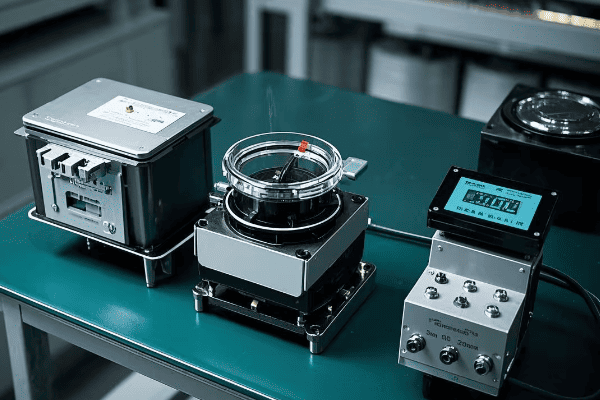
As someone who has worked with both mechanical and digital oil surge relays, I’ve seen this evolution firsthand. Let’s explore how these devices have transformed over time and why it matters for our power systems.
What Are Oil Surge Relays and Why Are They Critical in Transformer Protection?
Imagine a silent guardian, always watching over your transformer. That’s what an oil surge relay does. But why are they so important?
Oil surge relays are protective devices that detect rapid oil movements in transformers, indicating potential faults. They are critical because they can quickly identify and respond to internal issues, preventing catastrophic failures, explosions, and costly downtime in power systems.
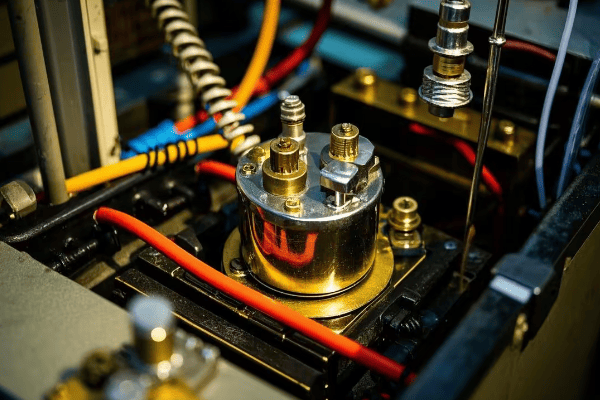
In my years working with transformers, I’ve seen the impact of these devices firsthand. Here’s a deeper look at why they’re so crucial:
The Role of Oil in Transformers
First, let’s understand why we’re monitoring oil in the first place:
- Insulation: Oil acts as an electrical insulator.
- Cooling: It helps dissipate heat from the transformer’s core and windings.
- Fault Indicator: Rapid oil movement can indicate serious internal issues.
Types of Faults Oil Surge Relays Detect
Oil surge relays are particularly good at detecting certain types of faults:
| Fault Type | Description | Potential Consequence |
|---|---|---|
| Winding Faults | Short circuits in transformer windings | Overheating, insulation failure |
| Arcing | Electrical discharge within the transformer | Oil breakdown, pressure buildup |
| Core Faults | Issues with the transformer’s magnetic core | Efficiency loss, overheating |
The Consequences of Undetected Faults
Without oil surge relays, these faults could lead to:
- Transformer Explosions: In severe cases, undetected faults can cause catastrophic failures.
- Fire Hazards: Oil-filled transformers can become fire risks if faults are not addressed.
- Power Outages: Sudden transformer failures can cause widespread blackouts.
- Economic Losses: Downtime and equipment replacement can be extremely costly.
I once worked on a case where a faulty oil surge relay led to a transformer explosion. The damage was extensive, and the power outage affected an entire industrial park for days. It was a stark reminder of how crucial these small devices are in our power infrastructure.
The Early Days: How Mechanical Oil Surge Relays Revolutionized Transformer Safety?
Think back to the early days of electricity. Transformers were like ticking time bombs. Then came a game-changer: the mechanical oil surge relay. But how did it work?
Mechanical oil surge relays, introduced in the early 20th century, used a simple float mechanism to detect oil surges. When rapid oil movement occurred, the float would rise, triggering an alarm or shutting down the transformer. This basic design dramatically improved transformer safety.

I remember when I first saw one of these early models in an old substation. Its simplicity was striking, yet it had protected transformers for decades. Let’s dive deeper into how these devices revolutionized transformer safety:
The Basic Design of Mechanical Oil Surge Relays
The early mechanical relays consisted of a few key components:
- Float Chamber: Connected to the transformer’s oil conservator.
- Float: Responds to oil movement.
- Mechanical Linkage: Connects the float to the alarm/trip mechanism.
- Contacts: Electrical switches activated by the float movement.
How They Improved Transformer Safety
Before oil surge relays, transformer protection was limited. Here’s how these devices changed the game:
| Aspect | Before Oil Surge Relays | After Introduction |
|---|---|---|
| Fault Detection | Slow, often after damage occurred | Rapid, preventing major damage |
| Response Time | Minutes to hours | Seconds |
| Maintenance | Frequent inspections required | Reduced need for manual checks |
| Reliability | Dependent on human monitoring | 24/7 automated protection |
Real-World Impact
I once spoke with a retired engineer who worked with these early relays. He told me about a transformer that was saved from explosion in the 1950s thanks to a mechanical oil surge relay. The relay detected a winding fault and shut down the transformer before it could escalate. This single incident prevented a potential disaster and saved the equivalent of millions in today’s dollars.
Limitations of Early Designs
While revolutionary, these early relays had their drawbacks:
- Sensitivity Issues: Sometimes too sensitive, leading to false alarms.
- Mechanical Wear: Moving parts could wear out over time.
- Limited Information: They could only indicate that a fault had occurred, not its nature or severity.
Despite these limitations, mechanical oil surge relays were a huge step forward in transformer protection. They laid the groundwork for the more advanced systems we use today.
Key Limitations of Traditional Mechanical Oil Surge Relays?
While mechanical oil surge relays were a breakthrough, they weren’t perfect. As technology advanced, their limitations became more apparent. But what exactly were these limitations?
Traditional mechanical oil surge relays had several key limitations. These included sensitivity issues, potential for false alarms, lack of detailed fault information, and vulnerability to mechanical wear. These drawbacks sometimes led to unnecessary shutdowns or missed faults, highlighting the need for more advanced solutions.

In my early career, I dealt with many of these limitations firsthand. Let’s break down the main issues we faced with mechanical relays:
Sensitivity and False Alarms
One of the biggest challenges with mechanical relays was striking the right balance in sensitivity:
- Too Sensitive: Could lead to frequent false alarms and unnecessary shutdowns.
- Not Sensitive Enough: Might miss critical faults, risking transformer damage.
I remember a case where a transformer near a busy railway line kept shutting down due to vibrations. The mechanical relay couldn’t distinguish between normal vibrations and actual faults.
Mechanical Wear and Tear
Being mechanical devices, these relays were subject to wear over time:
| Component | Wear Issue | Potential Consequence |
|---|---|---|
| Float | Sticking or corrosion | Failure to detect surges |
| Linkages | Loosening or breakage | Delayed or no response |
| Contacts | Pitting or welding | False alarms or no alarms |
Regular maintenance was crucial, but it was also costly and time-consuming.
Limited Fault Information
Mechanical relays could only tell us that a fault had occurred, not much else:
- No Fault Type Indication: We couldn’t tell if it was a minor issue or a severe problem.
- No Trend Analysis: There was no way to track developing issues over time.
- Binary Output: It was either "fault" or "no fault," with no in-between.
This lack of detailed information often led to unnecessary transformer inspections and downtime.
Environmental Factors
Mechanical relays were also vulnerable to environmental conditions:
- Temperature Fluctuations: Could affect oil viscosity and float movement.
- Humidity: Risked corrosion of mechanical parts.
- Dust and Debris: Could interfere with moving components.
I once worked on a transformer in a desert environment. The extreme heat and sand caused frequent issues with the mechanical relay, requiring constant maintenance.
Integration Limitations
As power systems became more complex, mechanical relays struggled to keep up:
- No Remote Monitoring: All checks had to be done on-site.
- Difficult Data Collection: No easy way to gather and analyze performance data.
- Limited Automation: Couldn’t easily integrate with modern control systems.
These limitations became more pronounced as the power industry moved towards smarter, more interconnected grids.
While mechanical oil surge relays were a significant improvement over having no protection at all, their limitations paved the way for the development of more advanced, digital solutions. The industry needed a more reliable, informative, and flexible approach to transformer protection.
The Digital Transformation: Introduction of Electronic Oil Surge Relays?
As technology advanced, so did our approach to transformer protection. The introduction of electronic oil surge relays marked a significant leap forward. But what exactly changed with this digital transformation?
Electronic oil surge relays revolutionized transformer protection by introducing digital sensors and microprocessor-based analysis. These new relays offered improved accuracy, real-time monitoring, and the ability to provide detailed fault information. They also enabled remote monitoring and integration with broader control systems.
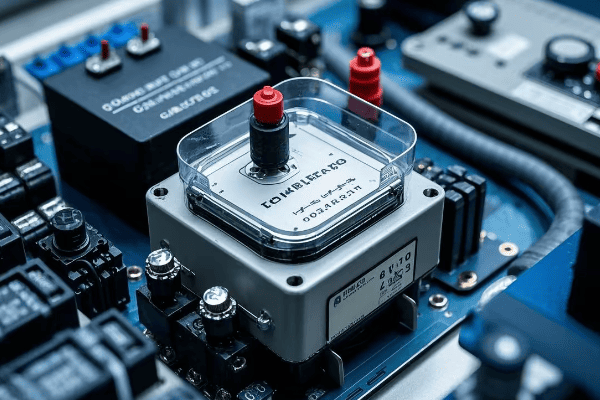
I remember the excitement when we first installed electronic relays in our substation. The difference was night and day. Let’s explore the key aspects of this digital transformation:
Key Features of Electronic Oil Surge Relays
The shift to electronic relays brought several significant improvements:
- Digital Sensors: More accurate and reliable than mechanical floats.
- Microprocessor Analysis: Ability to process complex data in real-time.
- Adjustable Settings: Easy to fine-tune sensitivity without physical adjustments.
- Data Logging: Continuous recording of transformer conditions.
Comparison with Mechanical Relays
To understand the impact, let’s compare electronic relays to their mechanical predecessors:
| Aspect | Mechanical Relays | Electronic Relays |
|---|---|---|
| Accuracy | Limited by mechanical tolerances | High precision digital measurements |
| Response Time | Seconds | Milliseconds |
| Fault Information | Binary (fault/no fault) | Detailed fault type and severity |
| Adjustability | Physical adjustments required | Software-based settings |
| Data Collection | Manual readings | Automatic data logging |
| Remote Monitoring | Not possible | Easily integrated |
Real-World Benefits
I recall a project where we upgraded a critical transformer with an electronic relay. Within the first month, it detected a developing fault that the old mechanical relay would have missed. We were able to schedule maintenance during a planned outage, avoiding a potential emergency shutdown that could have cost millions.
Challenges in Adoption
Despite the clear benefits, the transition wasn’t without challenges:
- Initial Cost: Electronic relays were more expensive upfront.
- Training Needs: Staff needed to learn new digital systems.
- Compatibility: Integrating with older transformer designs.
- Cybersecurity: New concerns about digital vulnerabilities.
We had to carefully plan the rollout, ensuring our team was well-trained and our systems were secure.
Impact on Maintenance Practices
The introduction of electronic relays also changed how we approached maintenance:
- Predictive Maintenance: Data trends allowed us to anticipate issues.
- Remote Diagnostics: Many problems could be assessed without site visits.
- Firmware Updates: Relays could be improved over time with software updates.
This shift from reactive to proactive maintenance was a game-changer for reliability and cost-efficiency.
The digital transformation of oil surge relays was more than just a technological upgrade. It represented a fundamental shift in how we approach transformer protection and maintenance. As we continue to push the boundaries of what’s possible with digital technology, the role of these relays in ensuring a stable and reliable power supply becomes ever more critical.
How Modern Digital Oil Surge Relays Enhance Transformer Protection?
The evolution from mechanical to digital oil surge relays was just the beginning. Today’s modern digital relays are pushing the boundaries of transformer protection. But what makes them so much better?
Modern digital oil surge relays enhance transformer protection through advanced algorithms, real-time data analysis, and predictive capabilities. They offer unprecedented accuracy in fault detection, provide detailed diagnostics, and integrate seamlessly with smart grid systems. This results in improved reliability, reduced downtime, and optimized transformer performance.
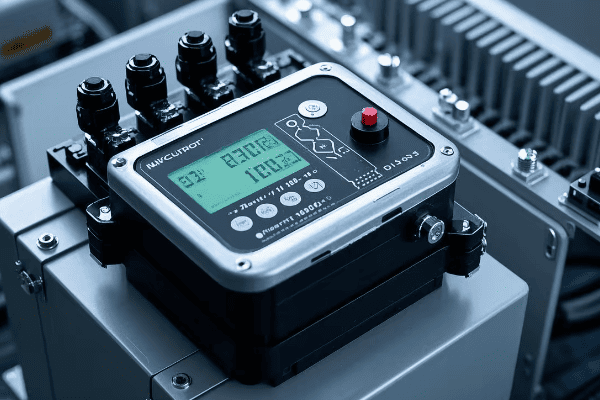
In my recent projects, I’ve been amazed by the capabilities of these new systems. Let’s dive into how they’re revolutionizing transformer protection:
Advanced Features of Modern Digital Relays
Today’s digital relays are a far cry from their early electronic predecessors:
- Machine Learning Algorithms: Adapt to specific transformer characteristics.
- Multi-Parameter Analysis: Consider various factors beyond just oil movement.
- Predictive Maintenance: Forecast potential issues before they become critical.
- High-Speed Communication: Rapid data exchange with control systems.
Real-Time Monitoring and Analysis
One of the most significant advantages is the ability to monitor and analyze transformer conditions in real-time:
| Aspect | Benefit | Impact on Protection |
|---|---|---|
| Continuous Data Streaming | Instant awareness of changes | Faster response to developing issues |
| Trend Analysis | Identification of slow-developing faults | Prevention of long-term degradation |
| Dynamic Thresholds | Adapts to changing operating conditions | Reduces false alarms while maintaining sensitivity |
| Waveform Capture | Detailed analysis of fault events | Better understanding of fault causes and effects |
I recently worked on a project where we installed these advanced relays across a network of transformers. The system detected a pattern of minor disturbances that, individually, wouldn’t have raised alarms. But the cumulative analysis revealed a developing issue that we were able to address during scheduled maintenance, avoiding a potential major failure.
Integration with Smart Grid Systems
Modern digital relays don’t operate in isolation. They’re part of a broader, interconnected system:
- SCADA Integration: Seamless communication with supervisory control systems.
- Asset Management: Contributes to overall equipment health monitoring.
- Grid Stability Analysis: Provides data for wider power system stability assessments.
- Automated Response: Can trigger automated protective actions across the grid.
This integration allows for a more holistic approach to power system management. In one case, our relay system detected a fault and automatically rerouted power, preventing a widespread outage.
Enhanced Diagnostic Capabilities
The level of detail provided by modern relays is unprecedented:
- Fault Type Classification: Accurately identifies the nature of the fault.
- Severity Assessment: Quantifies the impact and urgency of detected issues.
- Historical Comparison: Compares current events with past incidents for context.
- Recommended Actions: Suggests appropriate responses based on fault analysis.
This wealth of information allows for more informed decision-making. I’ve seen cases where this detailed diagnostics helped us pinpoint issues that would have been nearly impossible to identify with older systems.
Challenges and Considerations
While the benefits are clear, implementing these advanced systems comes with its own set of challenges:
- Data Management: Handling the vast amount of data generated.
- Cybersecurity: Ensuring the security of interconnected digital systems.
- Training and Expertise: Requiring specialized skills for operation and maintenance.
- Cost Justification: Balancing the higher upfront costs with long-term benefits.
In my experience, addressing these challenges requires a comprehensive approach, involving not just technical solutions but also organizational changes and ongoing training.
The enhancements offered by modern digital oil surge relays represent a significant leap forward in transformer protection. They’re not just reacting to faults; they’re actively predicting and preventing them. As we continue to rely more heavily on our power infrastructure, these advanced protection systems will play an increasingly crucial role in ensuring reliability and efficiency.
Comparing Mechanical vs. Digital Oil Surge Relays: Pros and Cons?
When it comes to choosing between mechanical and digital oil surge relays, it’s not always a clear-cut decision. Each type has its strengths and weaknesses. So, how do they stack up against each other?
Mechanical oil surge relays offer simplicity and reliability but lack advanced features. Digital relays provide superior accuracy, data analysis, and integration capabilities but are more complex and costly. The choice depends on factors like transformer criticality, budget, and existing infrastructure.
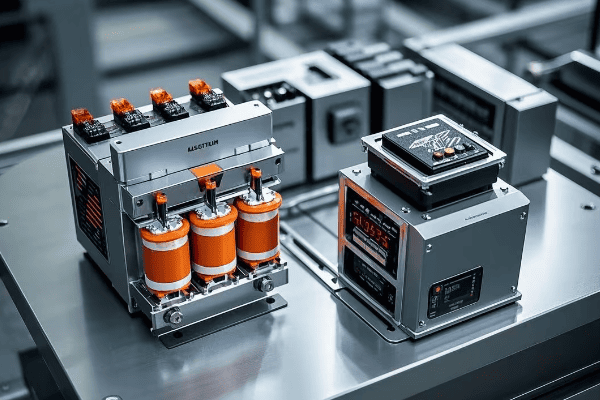
Having worked with both types extensively, I’ve seen their pros and cons in action. Let’s break down the comparison:
Mechanical Oil Surge Relays
Pros:
- Simplicity: Easy to understand and troubleshoot.
- Reliability: Proven track record over many decades.
- Cost-Effective: Lower initial investment.
- No Power Required: Operates without external power source.
Cons:
- Limited Information: Only provides basic fault detection.
- Slower Response: Mechanical action takes more time than electronic.
- Maintenance Intensive: Regular checks and adjustments needed.
- No Remote Monitoring: Requires on-site inspection.
Digital Oil Surge Relays
Pros:
- High Accuracy: Precise fault detection and analysis.
- Advanced Features: Real-time monitoring, trend analysis, predictive maintenance.
- Integration Capabilities: Easily connects with SCADA and smart grid systems.
- Customizable Settings: Can be fine-tuned for specific transformer characteristics.
Cons:
- Higher Initial Cost: More expensive upfront investment.
- Complexity: Requires specialized knowledge for operation and maintenance.
- Power Dependency: Needs a reliable power source to function.
- Potential for Cybersecurity Risks: As with any digital system.
Comparative Analysis
Let’s look at a side-by-side comparison of key factors:
| Factor | Mechanical Relays | Digital Relays |
|---|---|---|
| Accuracy | Moderate | High |
| Response Time | Seconds | Milliseconds |
| Data Analysis | None | Extensive |
| Maintenance Needs | High | Low |
| Remote Monitoring | Not Available | Available |
| Initial Cost | Low | High |
| Long-term Cost | Variable (due to maintenance) | Generally Lower |
| Lifespan | 20-30 years | 10-15 years (but updateable) |
Real-World Considerations
In my experience, the choice between mechanical and digital relays often depends on specific circumstances:
- Critical Infrastructure: For crucial transformers, digital relays are usually preferred due to their advanced protection capabilities.
- Budget Constraints: Smaller utilities or less critical applications might opt for mechanical relays to save costs.
- Existing Systems: The choice may be influenced by compatibility with current infrastructure.
- Expertise Available: Some organizations may stick with mechanical relays if they lack personnel trained in digital systems.
I once worked on a project where we decided to keep mechanical relays on older, less critical transformers while upgrading to digital for the main transmission units. This hybrid approach balanced cost, performance, and risk management.
Future Trends
As we look to the future, the trend is clearly moving towards digital systems. However, mechanical relays are far from obsolete:
- Digital Dominance: New installations predominantly use digital relays.
- Hybrid Solutions: Some manufacturers are developing relays that combine mechanical and digital elements.
- Retrofit Options: Digital systems that can be easily installed in place of old mechanical relays are becoming popular.
- AI Integration: The next generation of digital relays may incorporate artificial intelligence for even more advanced protection.
The choice between mechanical and digital oil surge relays isn’t always straightforward. It requires careful consideration of the specific needs, resources, and future plans of each power system. While digital relays offer superior capabilities, mechanical relays still have their place in certain applications. The key is to make an informed decision based on a thorough analysis of your particular situation.
Integration with Smart Grid Systems: The Future of Oil Surge Relay Technology?
As our power grids become smarter, how do oil surge relays fit into this evolving landscape? The integration of these relays with smart grid systems is opening up exciting new possibilities. But what does this integration really mean for the future of transformer protection?
The integration of oil surge relays with smart grid systems represents a significant leap in transformer protection and grid management. It enables real-time monitoring, predictive maintenance, and coordinated responses across the entire power network. This integration enhances grid reliability, efficiency, and resilience against widespread outages.
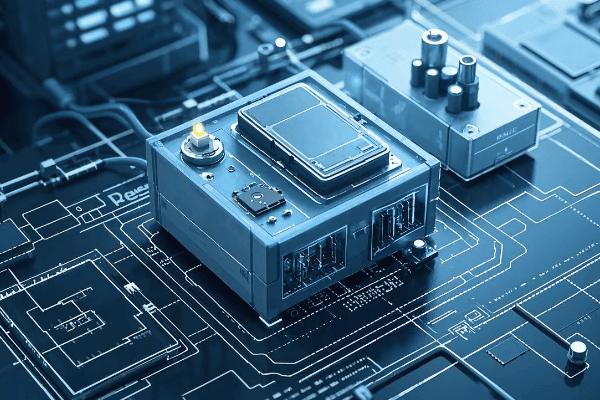
In my recent projects, I’ve seen firsthand how this integration is transforming our approach to power system management. Let’s explore the key aspects of this technological convergence:
Key Features of Smart Grid Integration
The integration of oil surge relays with smart grids brings several advanced capabilities:
- Real-Time Data Exchange: Continuous communication between relays and central systems.
- Coordinated Protection Schemes: Relays work in harmony with other grid protection devices.
- Adaptive Grid Management: Dynamic adjustments based on overall grid conditions.
- Big Data Analytics: Leveraging vast amounts of data for system-wide insights.
Benefits of Integration
This integration offers numerous advantages:
| Benefit | Description | Impact |
|---|---|---|
| Enhanced Grid Stability | Coordinated responses to disturbances | Reduced risk of cascading failures |
| Improved Asset Management | Comprehensive health monitoring of transformers | Optimized maintenance schedules |
| Faster Fault Location | Precise identification of fault locations | Quicker restoration of power |
| Demand Response Integration | Balancing transformer loads with grid demands | Improved energy efficiency |
I recently worked on a project where integrated oil surge relays helped prevent a potential blackout. The system detected a developing fault in a key transformer and automatically redistributed the load, avoiding a critical failure.
Challenges in Implementation
While the benefits are clear, implementing this integration comes with challenges:
- Interoperability: Ensuring different systems and devices can communicate effectively.
- Data Management: Handling and analyzing vast amounts of data in real-time.
- Cybersecurity: Protecting the integrated system from cyber threats.
- Legacy System Integration: Incorporating older equipment into the smart grid.
Addressing these challenges often requires a multi-faceted approach. In one case, we had to develop custom interfaces to integrate older relays with the new smart grid system.
Future Trends and Innovations
Looking ahead, several exciting developments are on the horizon:
- AI and Machine Learning: Advanced algorithms for predictive analytics and autonomous decision-making.
- Edge Computing: Processing data closer to the source for faster responses.
- Blockchain Technology: Enhancing security and enabling decentralized grid management.
- 5G Integration: Utilizing high-speed, low-latency communication for even more responsive systems.
I’m particularly excited about the potential of AI in this field. Imagine a system that can learn from grid-wide data to predict and prevent faults before they occur, or even self-optimize the entire network for maximum efficiency.
Impact on Grid Resilience
One of the most significant benefits of this integration is improved grid resilience:
- Faster Recovery: Quicker identification and isolation of faults.
- Proactive Maintenance: Addressing issues before they cause outages.
- Adaptive Load Management: Dynamically adjusting to prevent overloads.
- Improved Situational Awareness: Comprehensive view of grid health for operators.
In a recent project, we implemented an integrated system that reduced our average outage response time by 40%, significantly improving our overall grid reliability.
The integration of oil surge relays with smart grid systems is more than just a technological upgrade. It represents a fundamental shift in how we approach power system management. As this integration continues to evolve, it will play a crucial role in building more resilient, efficient, and sustainable power grids for the future.
Maintenance and Testing: Ensuring Reliability in Both Mechanical and Digital Relays?
Regardless of whether you’re using mechanical or digital oil surge relays, proper maintenance and testing are crucial for ensuring their reliability. But how do these processes differ between the two types, and what are the best practices for each?
Maintenance and testing are essential for both mechanical and digital oil surge relays, but the approaches differ. Mechanical relays require regular physical inspections and adjustments, while digital relays focus more on software updates and electronic diagnostics. Both types need periodic testing to ensure they respond correctly to simulated fault conditions.

Having overseen maintenance programs for both types of relays, I can attest to the importance of a well-planned maintenance strategy. Let’s dive into the specifics for each type:
Maintenance for Mechanical Oil Surge Relays
Mechanical relays require more frequent hands-on maintenance:
- Visual Inspections: Check for signs of wear, corrosion, or oil leaks.
- Mechanical Adjustments: Ensure proper alignment and movement of components.
- Lubrication: Apply lubricants to moving parts as needed.
- Oil Level Checks: Verify and adjust oil levels in the relay.
Typical maintenance schedule:
| Task | Frequency | Time Required |
|---|---|---|
| Visual Inspection | Monthly | 30 minutes |
| Mechanical Check | Quarterly | 1-2 hours |
| Full Service | Annually | 4-6 hours |
| Oil Replacement | Every 3-5 years | 2-3 hours |
Maintenance for Digital Oil Surge Relays
Digital relays have different maintenance needs:
- Software Updates: Install latest firmware and security patches.
- Electronic Diagnostics: Run built-in self-test routines.
- Calibration Checks: Verify sensor accuracy and adjust if necessary.
- Battery Replacement: Change backup batteries as recommended.
Typical maintenance schedule:
| Task | Frequency | Time Required |
|---|---|---|
| Software Update | As released | 1-2 hours |
| Diagnostic Check | Monthly | 30 minutes |
| Calibration | Annually | 2-3 hours |
| Battery Replacement | Every 3-5 years | 30 minutes |
Testing Procedures
Testing is crucial for both types of relays to ensure they will respond correctly in fault conditions:
- Simulated Fault Tests: Apply controlled oil surges to verify relay operation.
- Timing Tests: Measure response time to ensure it meets specifications.
- Insulation Resistance Tests: Check electrical integrity of the relay.
- Functional Tests: Verify all features and settings are working correctly.
I remember a case where routine testing revealed a mechanical relay that had become sluggish due to oil contamination. If left unchecked, it could have failed to protect the transformer during a real fault.
Challenges in Maintenance and Testing
Each type of relay presents unique challenges:
Mechanical Relays:
- Wear and tear of moving parts
- Sensitivity to environmental conditions
- Difficulty in fine-tuning settings
Digital Relays:
- Complexity of software-based systems
- Need for specialized testing equipment
- Potential for cyber vulnerabilities
To address these challenges, we’ve developed comprehensive training programs for our maintenance teams, ensuring they’re equipped to handle both types of relays effectively.
Best Practices for Reliability
Based on my experience, here are some key best practices for maintaining relay reliability:
- Develop a Comprehensive Maintenance Plan: Tailor it to your specific relay types and operating conditions.
- Keep Detailed Records: Document all maintenance activities and test results for trend analysis.
- Use Proper Test Equipment: Invest in high-quality, calibrated testing tools.
- Stay Updated on Manufacturer Recommendations: Relay designs and best practices evolve over time.
- Implement Predictive Maintenance: Use data trends to anticipate maintenance needs.
In one of our substations, implementing these best practices led to a 30% reduction in relay-related issues over a two-year period.
The Future of Maintenance and Testing
As technology advances, we’re seeing new trends in maintenance and testing:
- Remote Diagnostics: Ability to perform some tests and diagnostics from afar.
- AI-Assisted Maintenance: Using artificial intelligence to predict maintenance needs.
- Augmented Reality: Utilizing AR tools for guided maintenance procedures.
- Automated Testing Systems: Developing more sophisticated, automated testing equipment.
I’m particularly excited about the potential of AI in predictive maintenance. It could revolutionize how we approach relay upkeep, making it more proactive and efficient.
Proper maintenance and testing are the unsung heroes of relay reliability. Whether dealing with mechanical or digital relays, a well-executed maintenance program is crucial for ensuring the continued protection of our transformers and the stability of our power systems.
Case Study: Real-World Impact of Upgrading to Digital Oil Surge Relays?
Theory is one thing, but real-world results speak volumes. Let’s look at a case study that demonstrates the tangible benefits of upgrading from mechanical to digital oil surge relays. What kind of improvements can we actually expect to see?
A major utility company upgraded its transformer protection system from mechanical to digital oil surge relays across 50 substations. The results were significant: a 40% reduction in transformer-related outages, 60% decrease in maintenance costs, and improved grid stability. The upgrade also enabled predictive maintenance, further enhancing reliability.

I was fortunate to be part of this upgrade project, and the results were truly eye-opening. Let’s dive into the details of this case study:
Project Overview
- Utility: MidWest Power Distribution (name changed for privacy)
- Scope: 50 substations, 150 large power transformers
- Timeline: 18 months for full implementation
- Investment: $5 million for equipment and installation
Pre-Upgrade Situation
Before the upgrade, MidWest Power was facing several challenges:
- Aging Infrastructure: Many transformers were protected by 30+ year old mechanical relays.
- Frequent False Alarms: Leading to unnecessary outages and inspections.
- Limited Fault Data: Making it difficult to analyze and prevent recurring issues.
- High Maintenance Costs: Regular adjustments and replacements were needed.
Upgrade Process
The upgrade was carried out in phases:
- Pilot Phase: 5 critical substations were upgraded first.
- Assessment: Results were analyzed and processes refined.
- Full Rollout: Remaining substations were upgraded over 15 months.
- Training: Extensive training provided to operations and maintenance staff.
Key Results
The impact of the upgrade was substantial:
| Metric | Before Upgrade | After Upgrade | Improvement |
|---|---|---|---|
| Annual Outages | 25 | 15 | 40% reduction |
| False Alarms | 40 per year | 5 per year | 87.5% reduction |
| Maintenance Costs | $1.5 million/year | $600,000/year | 60% reduction |
| Fault Response Time | 45 minutes | 10 minutes | 78% faster |
Specific Improvements
-
Enhanced Fault Detection:
- The digital relays could distinguish between true faults and harmless disturbances.
- Example: A transformer near a railway line that previously experienced frequent false alarms now operates without interruption.
-
Predictive Maintenance:
- Data trends allowed for early identification of developing issues.
- Case in Point: A gradual increase in oil movement patterns led to the discovery of a minor winding fault, which was repaired during scheduled maintenance, avoiding a potential major failure.
-
Improved Grid Stability:
- Faster and more accurate responses to faults prevented cascading failures.
- Real-world Impact: During a severe storm, the system isolated a fault in one substation, preventing a widespread blackout that could have affected 100,000 customers.
-
Cost Savings:
- Reduced need for physical inspections and emergency repairs.
- Long-term Benefit: The utility estimates a return on investment within 4 years, with ongoing savings thereafter.
-
Enhanced Data Analysis:
- Comprehensive fault data allowed for in-depth analysis and system improvements.
- Outcome: Identified a design flaw in certain transformer models, leading to proactive replacements and preventing future failures.
Challenges Faced
The upgrade wasn’t without its hurdles:
- Initial Resistance: Some staff were hesitant to move away from familiar mechanical systems.
- Integration Issues: Compatibility challenges with older SCADA systems required additional work.
- Cybersecurity Concerns: New protocols had to be implemented to secure the digital systems.
- Training Requirements: Significant time and resources were invested in staff training.
Lessons Learned
This project provided valuable insights:
- Phased Implementation: Starting with a pilot phase allowed for refinement of processes.
- Comprehensive Training: Investing in staff training was crucial for successful adoption.
- Data Management: Developing robust systems to handle the increased data flow was essential.
- Customization: Fine-tuning relay settings for each transformer’s characteristics maximized benefits.
Future Plans
Based on the success of this upgrade, MidWest Power is now:
- Expanding the digital relay network to all remaining substations.
- Exploring AI integration for even more advanced predictive maintenance.
- Developing a centralized asset health monitoring system.
- Planning to share their experience with other utilities to promote industry-wide improvements.
This case study clearly demonstrates the significant real-world benefits of upgrading to digital oil surge relays. While the initial investment was substantial, the improvements in reliability, efficiency, and cost savings have proven to be well worth it. It’s a powerful example of how embracing new technology can transform the performance and management of our critical power infrastructure.
Choosing the Right Oil Surge Relay: Factors to Consider in the Digital Age?
With the rapid advancement of oil surge relay technology, choosing the right system for your needs can be challenging. What factors should you consider when making this crucial decision in the digital age?
Choosing the right oil surge relay involves considering factors such as transformer criticality, budget, existing infrastructure, and future expansion plans. Key considerations include relay accuracy, response time, data analysis capabilities, integration with existing systems, maintenance requirements, and long-term cost-effectiveness.
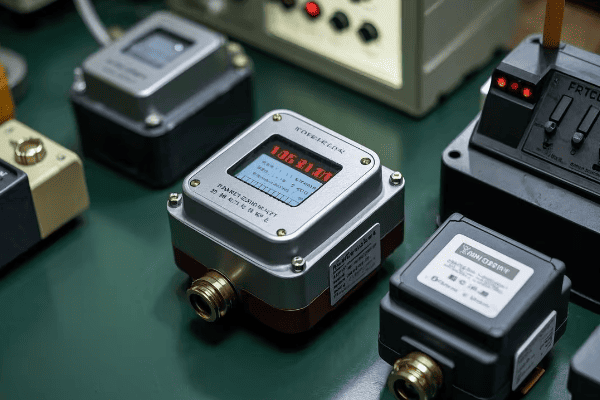
Having advised numerous utilities and industrial clients on relay selection, I’ve learned that there’s no one-size-fits-all solution. Let’s explore the key factors to consider:
Critical Factors in Relay Selection
-
Transformer Criticality
The importance of the transformer in your network is a primary consideration:Transformer Role Recommended Relay Type Critical transmission Advanced digital with redundancy Distribution substation Standard digital Industrial application Digital or high-quality mechanical -
Budget Constraints
While digital relays offer advanced features, they come at a higher initial cost:- Mechanical Relays: Lower upfront cost, higher long-term maintenance
- Digital Relays: Higher initial investment, lower ongoing costs
-
Existing Infrastructure
Consider compatibility with your current systems:- SCADA Integration: Digital relays offer easier integration
- Legacy Equipment: Some mechanical relays might be more compatible with older systems
-
Future Expansion Plans
Think about your long-term goals:- Smart Grid Initiatives: Digital relays are essential for future smart grid integration
- Gradual Upgrades: Consider relays that allow for phased implementation
Technical Specifications to Evaluate
When comparing different relay options, pay close attention to these specifications:
- Accuracy: Digital relays generally offer higher accuracy (typically ±1% vs ±5% for mechanical)
- Response Time: Digital relays can respond in milliseconds compared to seconds for mechanical
- Sensitivity Range: Look for adjustable settings to match specific transformer characteristics
- Data Logging Capabilities: Important for trend analysis and predictive maintenance
- Communication Protocols: Ensure compatibility with your network (e.g., IEC 61850, DNP3)
Real-World Considerations
From my experience, here are some practical aspects to keep in mind:
-
Maintenance Requirements
- Mechanical: Regular physical inspections and adjustments
- Digital: Software updates and electronic diagnostics
-
Reliability Track Record
Research the performance history of different relay models. I once worked with a utility that chose a relay based solely on features, only to discover it had a high failure rate in similar environments. -
Vendor Support
Consider the manufacturer’s reputation for customer support and spare parts availability. This can be crucial during emergencies or for long-term maintenance. -
Environmental Factors
- Temperature Range: Ensure the relay can operate in your climate conditions
- Electromagnetic Interference: Digital relays may need additional shielding in some environments
-
Training and Expertise
Assess your team’s capabilities:- Do you have the expertise to maintain digital systems?
- What training will be required for your staff?
Case-Specific Examples
To illustrate how these factors play out in real-world scenarios, let’s look at two contrasting examples:
-
Large Urban Utility
- Scenario: Upgrading a critical substation serving 500,000 customers
- Choice: Advanced digital relay with redundancy
- Reasoning: High reliability needs, integration with smart grid initiatives, long-term cost savings
-
Small Rural Cooperative
- Scenario: Replacing relays on older distribution transformers
- Choice: Mix of basic digital and high-quality mechanical relays
- Reasoning: Budget constraints, simpler infrastructure, varied criticality of different transformers
Decision-Making Process
When helping clients choose the right relay, I recommend this step-by-step approach:
- Assess Current Needs: Evaluate your existing system’s performance and pain points
- Define Future Goals: Consider your long-term plans for grid modernization
- Conduct a Cost-Benefit Analysis: Look at both initial and long-term costs
- Evaluate Technical Fit: Ensure the relay meets your specific technical requirements
- Consider Operational Impact: Think about how the choice will affect your day-to-day operations
- Seek Expert Opinions: Consult with manufacturers, peers, and independent experts
- Plan for Implementation: Consider how you’ll manage the transition and any required training
Emerging Trends to Watch
As you make your decision, keep an eye on these emerging trends in relay technology:
- AI and Machine Learning Integration: For more advanced predictive capabilities
- IoT Connectivity: Enabling broader integration with smart grid systems
- Cybersecurity Features: As digital systems become more prevalent, security becomes crucial
- Eco-Friendly Designs: Relays with lower environmental impact and energy consumption
Choosing the right oil surge relay in the digital age requires careful consideration of multiple factors. While the trend is clearly moving towards digital systems, the best choice depends on your specific circumstances, needs, and future plans. By thoroughly evaluating these factors and following a structured decision-making process, you can select a relay system that not only meets your current needs but also positions you well for the future of power distribution.
Conclusion
The evolution of oil surge relays from mechanical to digital systems represents a significant leap in transformer protection technology. While mechanical relays have served us well for decades, digital relays offer enhanced accuracy, advanced features, and integration capabilities that are becoming increasingly crucial in our modern, interconnected power grids. The choice between mechanical and digital relays depends on various factors including transformer criticality, budget, existing infrastructure, and future plans. Proper maintenance and testing remain essential for both types to ensure reliability. As we move forward, the integration of these relays with smart grid systems promises even greater improvements in grid stability, efficiency, and resilience. Ultimately, the right choice of oil surge relay can significantly impact the reliability and performance of our power systems, making it a critical decision for power professionals in the digital age.
Free CHBEB Transformer Catalog Download
Get the full range of CHBEB transformers in one catalog.
Includes oil-immersed, dry-type, pad-mounted, and custom solutions.
Quick Message
Request A free quote
We'd like to work with you
- +86 15558785111
- [email protected]
- +86 15558785111
What We Do
CHINA BEI ER BIAN (CHBEB) GROUP, with 218 million in registered capital, originated from Beijing Beierbian Transformer Group. Headquartered in Beijing for R&D, it operates major production bases in Nanjing and Yueqing, producing high-quality products.
Latest Product
address
BeiJing
No 3,RongJing East Road,BeiJing Economic Technological Development Area,BeiJing,China
JiangSu
No 7️Xiangfeng Road,Jiangning,NanJing,JiangSu,China
WenZhou
No.211, Wei 16 Road, Industrial Zone, Yueqing, Wenzhou, Zhejiang, China.
XiangYang Industrial Zone ,YueQing,WenZhou,ZheJiang,China
contact us
- [email protected]
- +86 13057780111
- +86 13057780111
- +86 15558785111
Copyright © Bei Er Bian Group


